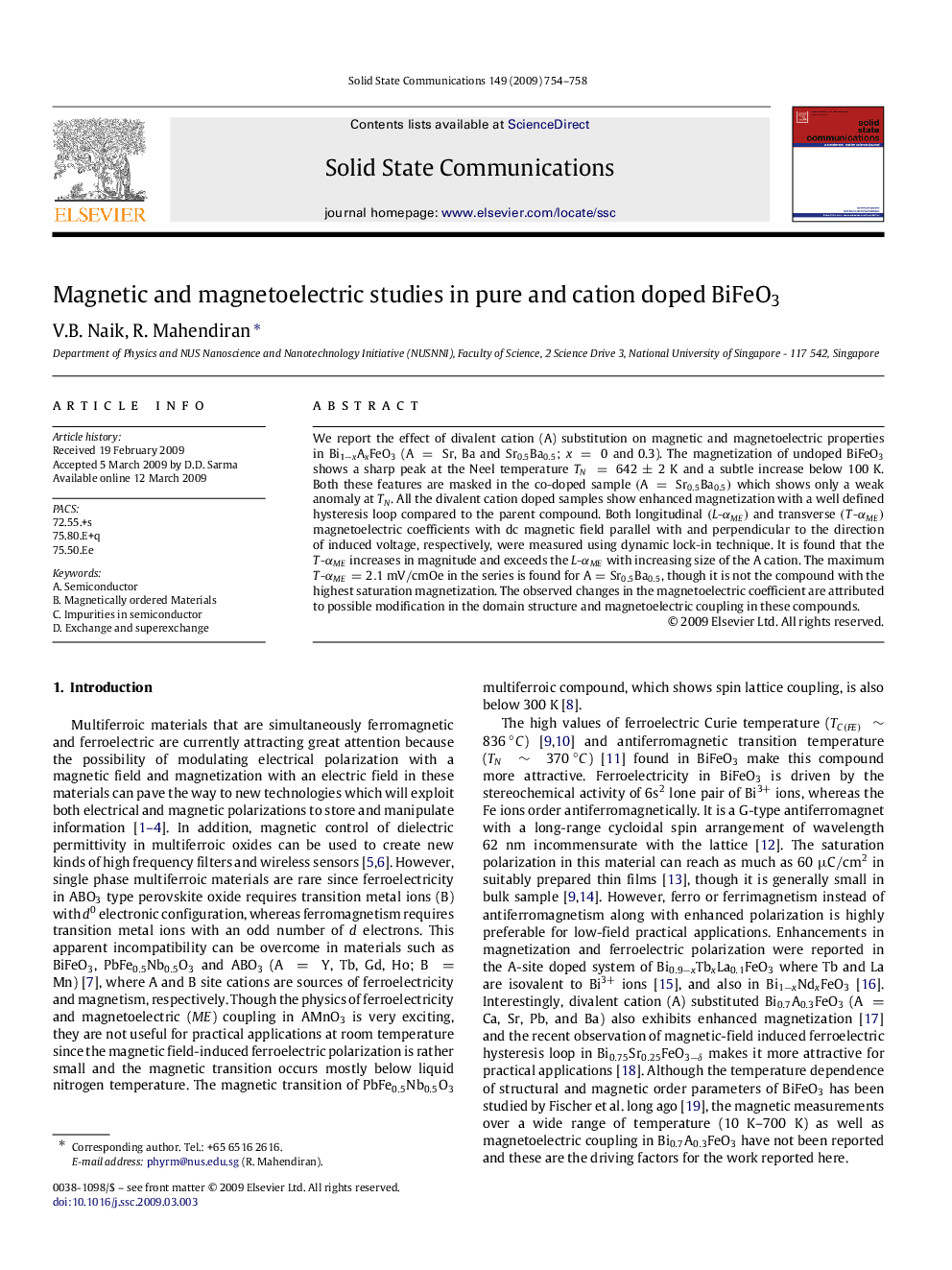| Article ID | Journal | Published Year | Pages | File Type |
|---|---|---|---|---|
| 1595256 | Solid State Communications | 2009 | 5 Pages |
We report the effect of divalent cation (A) substitution on magnetic and magnetoelectric properties in Bi1−xAxFeO3 (A=Sr, Ba and Sr0.5Ba0.5; x=0x=0 and 0.3). The magnetization of undoped BiFeO3 shows a sharp peak at the Neel temperature TN=642±2K and a subtle increase below 100 K. Both these features are masked in the co-doped sample (A=Sr0.5Ba0.5) which shows only a weak anomaly at TNTN. All the divalent cation doped samples show enhanced magnetization with a well defined hysteresis loop compared to the parent compound. Both longitudinal (L-αME)(L-αME) and transverse (T-αME)(T-αME) magnetoelectric coefficients with dc magnetic field parallel with and perpendicular to the direction of induced voltage, respectively, were measured using dynamic lock-in technique. It is found that the T-αMET-αME increases in magnitude and exceeds the L-αMEL-αME with increasing size of the A cation. The maximum T-αME=2.1mV/cmOe in the series is found for A=Sr0.5Ba0.5, though it is not the compound with the highest saturation magnetization. The observed changes in the magnetoelectric coefficient are attributed to possible modification in the domain structure and magnetoelectric coupling in these compounds.
